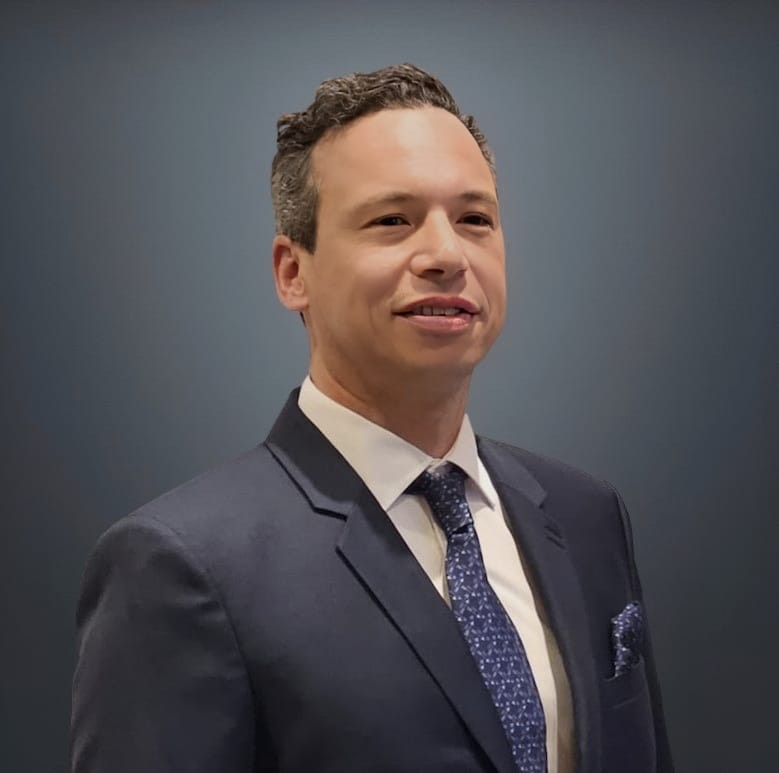Editor’s note: FM Perspectives are industry op-eds. The views expressed are the authors’ and do not necessarily reflect those of Facilities Management Advisor.
Public safety threats like active shooter situations and acts of terrorism have become increasingly complex and unpredictable. While surveillance cameras are widespread across the U.S., many systems fail to provide real-time monitoring and threat detection. Without continuous vigilance, these traditional methods cannot ensure a swift, effective response to emergencies that could save lives.

Relying solely on human monitoring and outdated technologies leaves communities vulnerable to modern dangers. We need innovative solutions that bridge the gap.
Integrating cutting-edge artificial intelligence (AI) into existing camera networks allows for constant, proactive threat identification to provide the crucial rapid response capabilities required for neutralizing threats before situations escalate. By embracing this technology shift, we can revolutionize public safety and eliminate deadly delays when a crisis strikes.
The Shortcomings of Traditional Surveillance Infrastructure
Despite the proliferation of surveillance cameras across the U.S., the current public safety infrastructure suffers from significant limitations that hinder its ability to adequately protect citizens. While the presence of these cameras may project an aura of security, they often fall short of providing the proactive, intelligent response required in a crisis.
One of the primary shortcomings is an over-reliance on human operators for continuous monitoring. With thousands of cameras deployed in major cities, ensuring every feed is consistently watched becomes practically impossible. A recent report on San Francisco’s public safety surveillance revealed that even police-managed cameras are not continuously monitored, rendering them ineffective at detecting crimes as they unfold.
Moreover, traditional surveillance systems often struggle with scalability challenges because as the number of cameras increases to meet growing security demands, the burden on human personnel intensifies, leading to potential oversights and lapses in vigilance. This limitation hinders the ability to expand surveillance efforts effectively without compromising overall system efficiency.
Another significant issue lies in the high frequency of false alarms and the inability to process vast amounts of data in real time. Human operators can become overwhelmed by the sheer volume of information, increasing the risk of missed threats or incorrect assessments, which could have dire consequences in emergencies.
Furthermore, traditional surveillance methods often lack the contextual awareness necessary to interpret and respond to potential threats accurately. Without advanced analytics capabilities, these systems cannot effectively identify patterns, anomalies, or subtle behavioral cues that may indicate imminent danger.
To address the evolving threat landscape and ensure optimal public safety, it is crucial to acknowledge current infrastructure limitations and explore innovative solutions to overcome these shortcomings. By recognizing these deficiencies, we can pave the way for transformative technologies that enhance our ability to proactively detect and respond to threats, ultimately creating a safer environment for all.
The Power of AI in Enhancing Surveillance Capabilities
At its core, AI excels in object recognition and pattern analysis capabilities—both of which are invaluable in the realm of surveillance. Through continuous training on vast datasets, AI systems can learn to identify even the most subtle visual cues that may indicate a potential threat. From recognizing firearms and other weapons to detecting suspicious behaviors or anomalies, AI’s perceptive abilities far surpass human limitations.
Moreover, AI’s prowess in processing massive volumes of data in real time is unparalleled. Traditional systems often struggle to keep pace with the influx of information from multiple camera feeds, leading to delays and potential oversights. In comparison, AI can seamlessly analyze and interpret data from countless sources simultaneously, providing instantaneous threat assessments and alerts.
This real-time detection capability is crucial in emergencies where every second counts. AI’s ability to automatically identify and flag potential threats as they emerge empowers security personnel to respond swiftly and decisively, potentially preventing escalation and minimizing casualties.
Another significant advantage of AI is its ability to enhance surveillance accuracy through advanced video analytics. By combining visual data with statistical analysis and predictive modeling, AI can provide valuable context and insights that traditional systems often lack. This contextual awareness enables more informed decision-making and targeted response strategies, reducing the likelihood of false alarms and increasing overall system effectiveness.
Moreover, AI’s scalability and adaptability make it an ideal solution for expanding surveillance efforts without compromising efficiency. As the number of cameras and data sources grows, AI can seamlessly integrate new information streams, continuously learning and optimizing its threat detection capabilities without requiring extensive human training or intervention.
Expanding Capabilities: AI’s Future in Public Safety Surveillance
As transformative as AI’s current impact is on enhancing surveillance and threat detection, its potential for revolutionizing public safety extends even further. The future holds exciting possibilities for leveraging this technology to create more comprehensive, intelligent, and adaptive security solutions.
One area ripe for AI integration is dynamic emergency response optimization. By analyzing real-time data from multiple sources, including surveillance feeds, traffic patterns, and incident reports, AI systems can intelligently route first responders and security personnel along the most efficient paths. This capability ensures faster response times and maximizes resource allocation to enable a more coordinated and effective incident management strategy.
Moreover, AI’s ability to identify patterns and anomalies through predictive analytics opens new avenues for proactive threat mitigation. The ability to continuously analyze historical data and environmental factors allows AI algorithms to forecast potential risk areas or scenarios, allowing authorities to implement preemptive measures and allocate resources strategically. This predictive capacity empowers a shift from reactive to preventive security measures, potentially averting incidents before they occur.
As AI technologies continue to evolve, their integration into public safety systems will become increasingly seamless and autonomous. Advanced computer vision algorithms, coupled with machine learning, will enable surveillance networks to adapt dynamically to changing environments, continuously refining their threat detection capabilities without human intervention. This self-learning and self-optimizing nature will ensure that security measures remain robust and effective, even in the face of rapidly evolving threats.
The future of AI-driven surveillance promises enhanced collaboration and interoperability between various agencies and stakeholders. Establishing common data standards and secure information-sharing protocols lets AI systems facilitate real-time communication and coordination among law enforcement, emergency services, and private security organizations, fostering a unified front against public safety threats.
As we look ahead, the potential for AI to reshape the landscape of public safety is vast and exciting. By embracing these cutting-edge technologies and fostering continuous innovation, we can create a future where communities feel safer, more secure, and better protected against the challenges of an ever-changing world. The integration of AI into surveillance systems is not just a technological advancement but a commitment to preserving the fundamental right to safety for all citizens.

Hussein AbuHassan is the president and founder of Law Enforcement Network (LENX), a provider of AI-powered security and public safety solutions.

